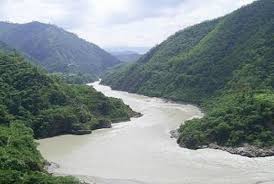Wildlife Institute of India: High Biodiversity in 49% of Ganges
The Wildlife Institute of India recently released a survey on the Ganges river. According to the survey, 49% of the river is high on biodiversity. These are results of phase I of the survey. The second survey is to be conducted shortly.
Key Highlights
The Gangetic Dolphins and Otters in the river have increased in numbers. This indicates that the pollution level in the river has decreased and the river is in healthy state.
The study was conducted by the WII on behalf of National Mission for Clean Ganga undertaken by the Ministry of Jal Shakti. The first phase of the survey was held in 2017-19.
The study is first of its kind that is conducted on the entire river and also first of all its biodiversity.
Key findings
Earlier, there were beliefs and findings that certain areas of Ganga had no biodiversity. However, this has been proved wrong by the study. According to the study, the entire river has some biodiversity. 10% of high biodiversity areas are Rajaji National Park in Uttarakhand, Vikramshila Gangetic Dolphin Sanctuary in Bihar, Hastinapur wildlife sanctuary.
The study has found key semi-aquatic and aquatic species such as Gharials, Gangetic Dolphins, Otters, Turtles and several species of water birds. Also nesting colonies of Indian Skimmer. Several species that had disappeared 80 years ago have now resurfaced.
High Biodiversity Zones
The high Biodiversity zones of the Ganges has been divided into six zones. They are Makdumpur to Narora, Devprayag to Rishikesh, Bhitaura to Ghazipur, Sahibganj to Rajmahal, Chhapra to Kahalgaon and Baharampur to Barackpore.
Major threats
According to the study the major threats of biodiversity of rive Ganges are sand mining, construction of dams and barrages, bank alteration loss of suitable habitat conditions.
The United Nations Environment Programme says that the decline of biodiversity of freshwater species is the highest of all the other species. The highest loss of biodiversity was reported in the Indian subcontinent.
Month: Current Affairs - November, 2020


